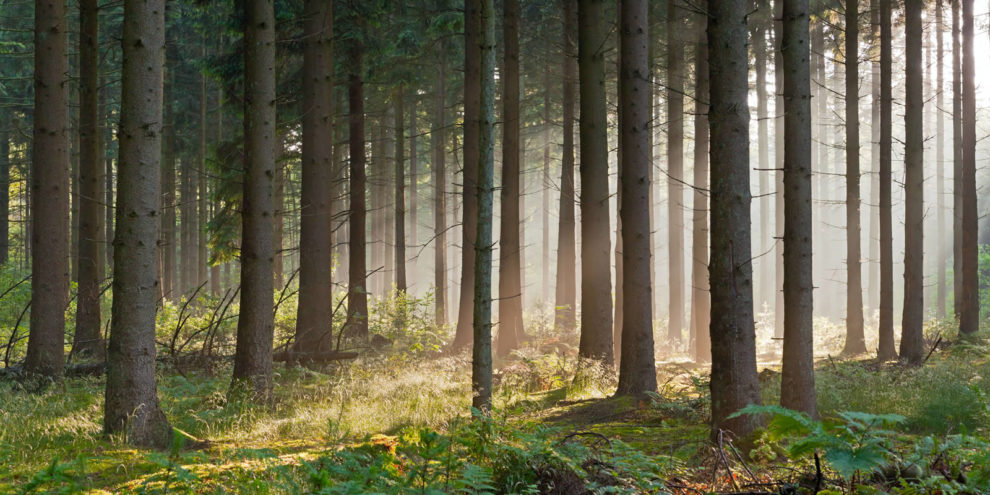When it comes to diversifying the investment portfolio there are quite a few common options. However, most mainstream investors are not familiar with the idea of timberland investments.
But the fact is, institutional timberland investing has grown to a figure of 100 billion U.S. dollars today. In terms of area, the Timber Investment Management Organizations manage around 25 million acres of forestland.
Frankly, anyone looking for stable and steady growth of investments will find timberland a valid option. What really makes it stand apart is the fact that it’s least affected by the volatile economic climate. Let’s take a closer look at the details of the timberland real estate business.
History of Timberland Investments
Timberland is all about investing in forests and depending on the growth rate of trees. The return comes through the harvesting of the trees after a period of time. In fact, the concept of buying wooded areas and using them for mass-producing a particular product has been used since the early 1900s. These included furniture, paper products, and building materials.
By the 1980s this practice started changing. Many timberland owners got rid of these production methods and started creating investment opportunities for private investors. Presently, some timberland is managed by Timber Investment Management Organizations (TIMO). A few others are classified as REITS (Real Estate Investment Trusts).
Today, the U.S. timberland market has matured significantly. Moreover, investment opportunities have also risen in Latin American countries, Australia, and New Zealand.
Why Invest in Timberland?
The fact that makes timberland real estate an attractive option is that trees grow physically. Moreover, past records have proved that timberland returns can be as good as those from equity investments. The added advantage is, it comes with lesser risk.
Keep in mind, the measure of the U.S. timberland investment performance is done by the NCREIF Timberland Index. On average, trees grow 5% each year by volume. This does depend on the species, age, climate conditions, and other factors.
Here are the major reasons behind timberland being an excellent addition to an investor’s portfolio.
- Timber is an asset that grows in quantity through natural biological growth. There isn’t much extra effort required to sustain the growth levels of a tree after a certain period of time. Moreover, this growth rate is irrespective of the current state of the economy.
- Timberland real estate can work as a shield against unexpected inflation rates. The record of the past two decades indicates the highest positive correlation of timberland with inflation. So it’s a great option for immunizing your portfolio against inflation.
- The global demand for timber is on the rise. As per records, the volume of trade in global timber products was 11 percent higher in 2018 than that in 2017. So the market is ripe for a steady appreciation of timberland prices.
- In case timber prices become unfavorable, they can be stored on the stump till the prices go up. At the same time, the timber volume will go on rising with time. This can’t be said about other investment options like stocks or gold. Quite simply, while waiting for share prices to go up, the number of shares you own won’t rise.
- The reality is, timberland investments have around half the level of volatility than stock investments. Since they are not linked directly to traditional financial markets the overall risk factor is much less.
- The other thing is, unlike any other form of investment, timberland is a tangible asset that any owner can enjoy. A forest can be a place for recreation and for creating memories with your family.
Risk Factors in Timberland Investing
While there are plenty of upsides, timberland investments are not without a few risks.
First thing is, timberland is a long-term investment option. In case you have debt obligations, you need to understand the cash flow cycle of the timber stands before investment.
Besides, timberland is an illiquid asset. That means it’s more difficult to sell and can take anywhere between 6 to 18 months. So make sure to find a successful agent with a proven track record of dealing with these transactions.
Next, there’s market uncertainty related to factors like recession and a housing market crash. Other risk factors include damage from fire, climate factors, insects, or disease.
However, with the right level of forest management and geographic diversification, such environmental risks can be limited. Also, the amount of timberland assets lost annually to natural disasters is less than 0.5% of the total.
How to Invest in Timberland?
Basically, timberland can be purchased in two ways.
In case you’re not interested in active timberland management, you can purchase publicly traded stocks dealing with timber. These can be timber REITs (Real Estate Investment Trusts) or timber ETFs (Exchanged Traded Funds).
Other than that, you can also purchase timberland real estate directly. This allows a higher level of control over the investment. Investors with no experience in managing timberland often hire Timber Investment Management Organizations (TIMO) for this purpose. Some investors hire consulting foresters to manage the land.
No matter the method of purchase, here are a few points to keep in mind while buying any timberland real estate.
- Ideally, the property should be located in an area with a high concentration of mills. This results in a higher demand for timber.
- The quality of the soil should be ideal for the growth of the most profitable species of timber.
- The purchase price should be low enough to allow a good rate of return after the timber is fully grown
- Make sure that the major portion of the property is suitable for logging activities.
Portfolio Management Strategy for Timberland Investing
Honestly, there’s no exact methodology for timberland investing. But if you’re investing in timberland real estate for the first time, it’s necessary to understand the details. For that, you can take the help of a forester to determine the best value of forest land. Make sure that you chose a forester certified by the Society of American Foresters.
Since each property has its distinct features, a careful study has to be made before investing. At the same time, you need to fix your objectives. Your timberland investment goals can be pure economic return or a balance between investment and recreational use.
While these goals may not be mutually exclusive, a sound strategy is essential for balancing your investment plan.
Besides, the planting costs and management costs are to be taken into account. In general, you need to invest in at least ten acres of timber to get a substantial return. Also, choose the right age and class of timber so that merchantable age matches your financial goals.
Other than that, the strategy should also include land appreciation through the time period. A well-maintained forest connected with a highly populated zone through a good network of roads fetches a good value.
Beyond that, forestlands can also be leased for recreational activities like hiking, camping, or hunting. Once the harvesting is complete, the land can be used for developing an industrial park, shopping mall, or even a golf course.
Conclusion
In a nutshell, timberland prices are directly related to the rate of biological growth and the wood prices. This makes them dependent on the interaction between wood supply and demand. But, the returns on timberland investments are driven by economic factors that are completely different than the ones driving stocks and bonds.
That means, when you’re looking to create a mixed investment portfolio, timberland offers great potential for diversification. In the end, that can lead to better investment performance.
Written by Christian Saunders, owner and broker at Christian Saunders Real Estate, located in Dunmore, PA. Christian and his team represent buyers and sellers in Lackawanna, Luzerne, Wayne, and Monroe counties.
This content may not be used or reproduced in any manner whatsoever, in part or in whole, without written permission of LANDTHINK. Use of this content without permission is a violation of federal copyright law. The articles, posts, comments, opinions and information provided by LANDTHINK are for informational and research purposes only and DOES NOT substitute or coincide with the advice of an attorney, accountant, real estate broker or any other licensed real estate professional. LANDTHINK strongly advises visitors and readers to seek their own professional guidance and advice related to buying, investing in or selling real estate.










Add Comment